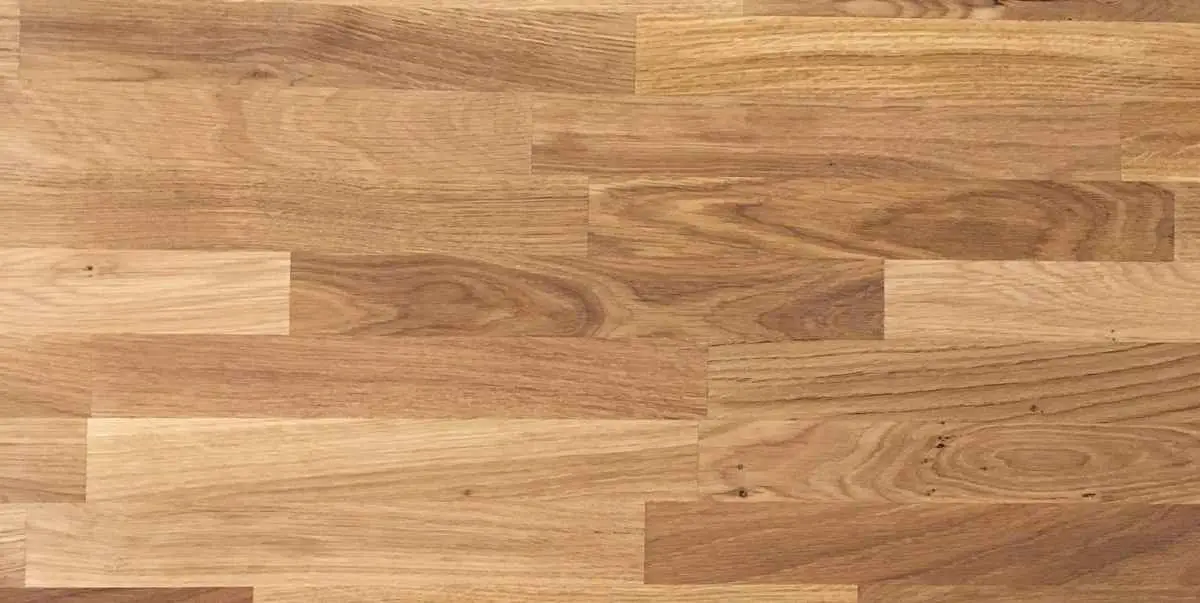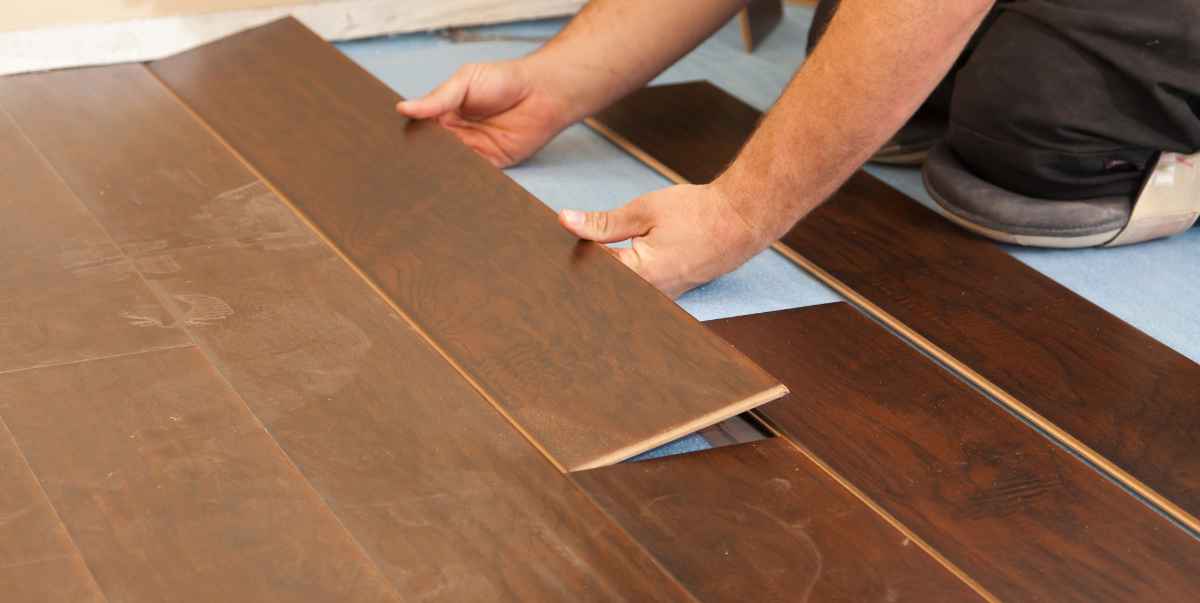Wood flooring should ideally be laid perpendicular to the longest wall in the room for better stability and a visually appealing look. When considering the direction of your wood flooring installation, keep in mind that it should follow the flow of foot traffic and natural light, as well as the architectural features of the space.
By laying wood flooring perpendicular to the longest wall, you ensure that the floorboards are installed across the joists, providing maximum support and reducing the risk of sagging or buckling over time. This direction also enhances the overall visual aesthetic, making the room feel more spacious and inviting.
Whether you choose a classic horizontal or a trendy diagonal installation, consider these factors to determine the best direction for your wood flooring.
Factors To Consider
When laying wood flooring, it is crucial to consider the direction. Factors such as the room shape, light source, and entrance should guide your decision for a visually appealing and functional flooring layout. Choose wisely for a beautiful and practical result.
When it comes to laying wood flooring, determining the right direction is crucial for achieving a visually appealing and functional result. Several factors come into play when deciding on the direction of wood flooring installation. These factors include the existing subfloor, room size and shape, and natural light and sightlines. Understanding these factors will help you make an informed decision about the best direction to lay your wood flooring.
Existing Subfloor
The existing subfloor is an essential consideration when determining the direction of wood flooring installation. In most cases, wood flooring is installed perpendicular to the floor joists. This installation method ensures structural integrity and prevents the flooring from sagging over time. If your subfloor is concrete or plywood, you have more flexibility in choosing the direction of the wood flooring. However, it is still advisable to follow the perpendicular installation method for a more stable and aesthetically pleasing result.
Room Size and Shape
The size and shape of the room play a crucial role in determining the direction of wood flooring installation. In smaller rooms, laying the planks parallel to the longest wall can create an illusion of a more spacious area. Conversely, in larger rooms, laying the planks across the room’s width can help break up the space and add visual interest. Additionally, the shape of the room can influence the direction of installation. If the room is irregularly shaped or has multiple doorways, it is best to consider how the planks will flow throughout the space for a cohesive look.
Natural Light and Sightlines
Considering the direction of natural light and sightlines can greatly impact the visual appeal of your wood flooring. Laying the planks parallel to the direction of incoming natural light can enhance the room’s brightness and highlight the flooring’s natural beauty. Additionally, aligning the planks with the primary line of sight, such as the entrance or focal point of the room, can create a more visually appealing and welcoming space. Taking these factors into account ensures that your wood flooring becomes a focal point and complements the overall design of the room.
In conclusion, determining the direction of wood flooring installation requires careful consideration of several factors. Analyzing the existing subfloor, room size and shape, as well as natural light and sightlines, will help you make an informed decision. An experienced flooring professional can also provide guidance based on these factors, ensuring the best outcome for your wood flooring installation. So, take your time to evaluate these factors and create a functional and visually stunning space with your wood flooring.

Horizontal Vs. Vertical Placement
Choosing the right direction for wood flooring installation is crucial as it not only affects the overall appearance of your space but also influences the flow and dimensions of the room. Two common placement options are horizontal and vertical. In this blog post, we will explore the advantages and considerations of each option to help you make an informed decision.
Horizontal Placement
Horizontal placement refers to installing wood flooring boards parallel to the longest wall in the room. This direction is often preferred in rooms with a rectangular layout, as it helps create the illusion of a wider and more spacious area. The horizontal installation draws the eye from side to side, visually stretching the room and adding a sense of openness.
Moreover, horizontal placement is ideal if you have a stunning view or architectural features on one of the longer walls. Placing the floorboards horizontally would accentuate these elements, making them stand out and creating an inviting focal point in the space.
Another advantage of horizontal placement is the ease of installation and maintenance. The long, straight lines of the floorboards are simpler to fit together, resulting in a seamless and professional look. Additionally, if your room is prone to natural lighting, horizontal placement can amplify the light by reflecting it off the parallel floorboards, making your space appear brighter and more inviting.
Vertical Placement
On the other hand, vertical placement involves installing wood flooring boards perpendicular to the longest wall in the room. This direction is often chosen in spaces where you want to emphasize the length of the room, such as hallways or long corridors. By running the floorboards vertically, you create an elongated effect, making the space feel narrower and longer.
Vertical placement can also complement certain architectural features, such as tall windows or high ceilings, by drawing the eye upwards. This can create a sense of grandeur and elegance. Additionally, if your room has multiple entry points or connecting spaces, vertical placement can help establish a clear direction, leading the eye from one area to another.
Furthermore, vertical installation can be advantageous in small rooms or those with irregular layouts. By running the floorboards vertically, you can visually elongate and expand the space, making it appear larger and more proportionate.
In conclusion, the decision between horizontal and vertical wood flooring placement depends on various factors like the room’s layout, architectural features, and desired aesthetic. Carefully consider these factors and choose the placement option that best suits your space. Whether you opt for the width-enhancing horizontal placement or the length-emphasizing vertical placement, both can contribute to a stylish and visually appealing floor.

Patterns And Designs
When it comes to laying wood flooring, one crucial consideration is the direction in which the planks should be installed. While many factors can influence this decision, including the layout of the room and the position of doors and windows, patterns and designs also play a significant role in determining the best direction for your wood flooring. Two popular patterns that can add visual interest and enhance the overall aesthetic of your space are the Herringbone Pattern and the Chevron Pattern.
Herringbone Pattern
The Herringbone Pattern is a timeless classic that can bring a touch of elegance to any room. This pattern features rectangular planks set at a 90-degree angle, creating a zigzag effect that is visually appealing. Opting for the Herringbone Pattern can give your space a sophisticated and luxurious look, making it an excellent choice for formal living areas or entryways.
When installing wood flooring in a herringbone pattern, the planks are typically laid at a 45-degree angle to the walls. This technique adds depth and dimension to the room, making it appear larger and more spacious. The herringbone pattern can be especially striking when paired with contrasting wood tones or mixed with other patterns, such as a diagonal border.
Chevron Pattern
The Chevron Pattern is another popular choice that adds a modern and stylish touch to any space. Similar to the herringbone pattern, the chevron pattern also features planks that are set at an angle. However, unlike the herringbone pattern, which creates a zigzag effect, the chevron pattern is characterized by a continuous V-shape.
Installing wood flooring in a chevron pattern involves cutting planks at a 45-degree angle and fitting them together to form the chevron shape. This pattern can add a sense of movement and drama to a room, making it an excellent choice for spaces that need a bold statement. The chevron pattern can be particularly eye-catching when paired with contrasting wood tones or combined with other patterns, such as a straight border.
Both the Herringbone Pattern and the Chevron Pattern offer unique and visually striking alternatives to the traditional way of laying wood flooring. Whether you prefer the classic elegance of the herringbone pattern or the contemporary appeal of the chevron pattern, incorporating these designs into your wood flooring can transform your space into a work of art.
Alternative Placement Options
While the traditional way of laying wood flooring is usually in a straight, horizontal pattern, there are alternative placement options that can add visual interest and dimension to any space. Angled placement and mixed-width placement are two popular alternatives that can create a unique and dynamic look in your home. Let’s take a closer look at each of these options.
Angled Placement
Angled wood flooring installation involves laying the planks at an angle instead of parallel or perpendicular to the walls. This technique can enhance the room’s architectural features and create a sense of movement throughout the space. Angled placement usually involves cutting the planks at a 45-degree angle and requires precise measurements and attention to detail.
Benefits of angled placement:
- Creates visual interest and focal points in the room.
- Makes the room appear larger and more spacious.
- Adds a unique and modern touch to your interior design.
- Allows for creative pattern designs, such as herringbone or chevron.
However, it’s important to note that angled placement can be more challenging to install and may require more time and effort compared to traditional straight placement. It’s recommended to hire a professional flooring installer with experience in angled installations to achieve the desired results.
Mixed-width Placement
Mixed-width wood flooring installation involves using planks of varying widths instead of uniform-sized planks. This technique creates a visually appealing and rustic look, reminiscent of old-world charm. The combination of different widths adds character and depth to the room, breaking up the monotony of traditional straight planks.
Benefits of mixed-width placement:
- Creates a custom and personalized look for your space.
- Enhances the natural beauty and variation of the wood.
- Adds a sense of history and character to your home.
- Allows for creative pattern designs, such as staggered widths or random-width planks.
When opting for mixed-width placement, it’s crucial to plan the layout carefully to achieve a balanced and harmonious design. Consider the room’s dimensions, furniture placement, and overall aesthetic to determine the best combination of plank widths.
In conclusion, alternative placement options for wood flooring, such as angled placement and mixed-width placement, offer exciting opportunities to create a unique and visually stunning space. Whether you prefer a modern and dynamic look or a rustic and charming feel, these alternatives can help you achieve the desired effect. However, it’s essential to consult with a flooring professional to ensure proper installation and to make the most of these creative placement options.
Considerations For Different Rooms
When it comes to laying wood flooring, one of the key decisions is determining the direction in which the planks should be installed. While there are many factors to consider, such as the size and layout of the room, furniture placement, and the presence of natural light, it is essential to approach each room individually to achieve the best results. Let’s explore the considerations for different rooms:
Living Room
In the living room, where family and friends gather, the direction in which wood flooring is laid can significantly impact the overall aesthetics. To create a welcoming and visually pleasing space, it is recommended to install the planks parallel to the longest wall in the room. This layout creates an elongated appearance, making the room feel more spacious. Additionally, it can help guide the eye towards the focal points of the room, such as a fireplace or a beautiful piece of furniture.
Bedroom
In the bedroom, where comfort and relaxation are paramount, the direction of the wood flooring should be chosen to enhance the overall ambiance. To create a cozy and intimate atmosphere, it is often preferred to lay the planks parallel to the main source of light, such as a large window or a balcony door. This arrangement allows the natural light to flow across the room, offering a warm and inviting feel. Moreover, it can visually expand the space, making it appear more spacious and open.
Kitchen
When it comes to the kitchen, functionality and durability take center stage. Since this room experiences high foot traffic and is prone to spills and moisture, it is crucial to select the most practical direction for the wood flooring. In general, it is recommended to install the planks perpendicular to the floor joists for added stability and to minimize the risk of cupping or warping. By doing so, the floor can withstand the demands of the kitchen environment and provide a sturdy foundation for heavy appliances and frequent movement.
Bathroom
In the bathroom, where moisture levels are higher than in other areas of the home, special consideration must be given to the direction of the wood flooring. To prevent issues such as water damage and warping, it is advisable to lay the planks perpendicular to the main source of water, such as the bathtub or shower. This installation approach facilitates proper drainage and minimizes the risk of water seeping between the seams. Additionally, it provides a visually appealing pattern that adds a touch of elegance to the space.
Conclusion
The direction in which wood flooring is laid can greatly impact the overall aesthetics and functionality of a space. By following some key guidelines, such as aligning the planks with the longest wall, considering the flow of natural light, and taking into account the architectural features of the room, you can create a visually pleasing and structurally sound flooring design.
Remember, proper installation is essential for achieving the desired look and ensuring the longevity of your wood flooring investment.


